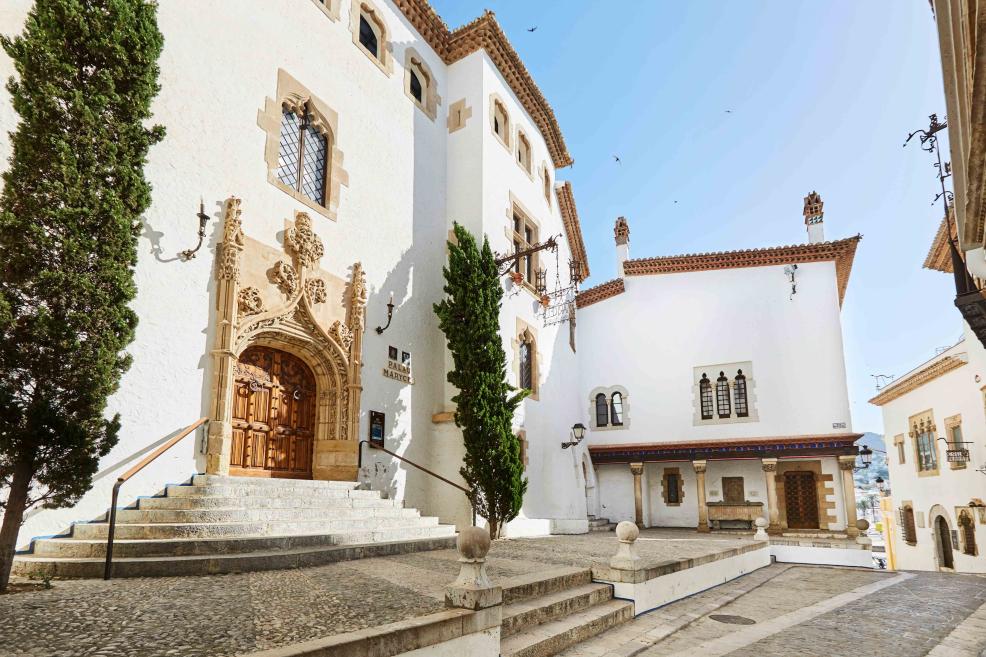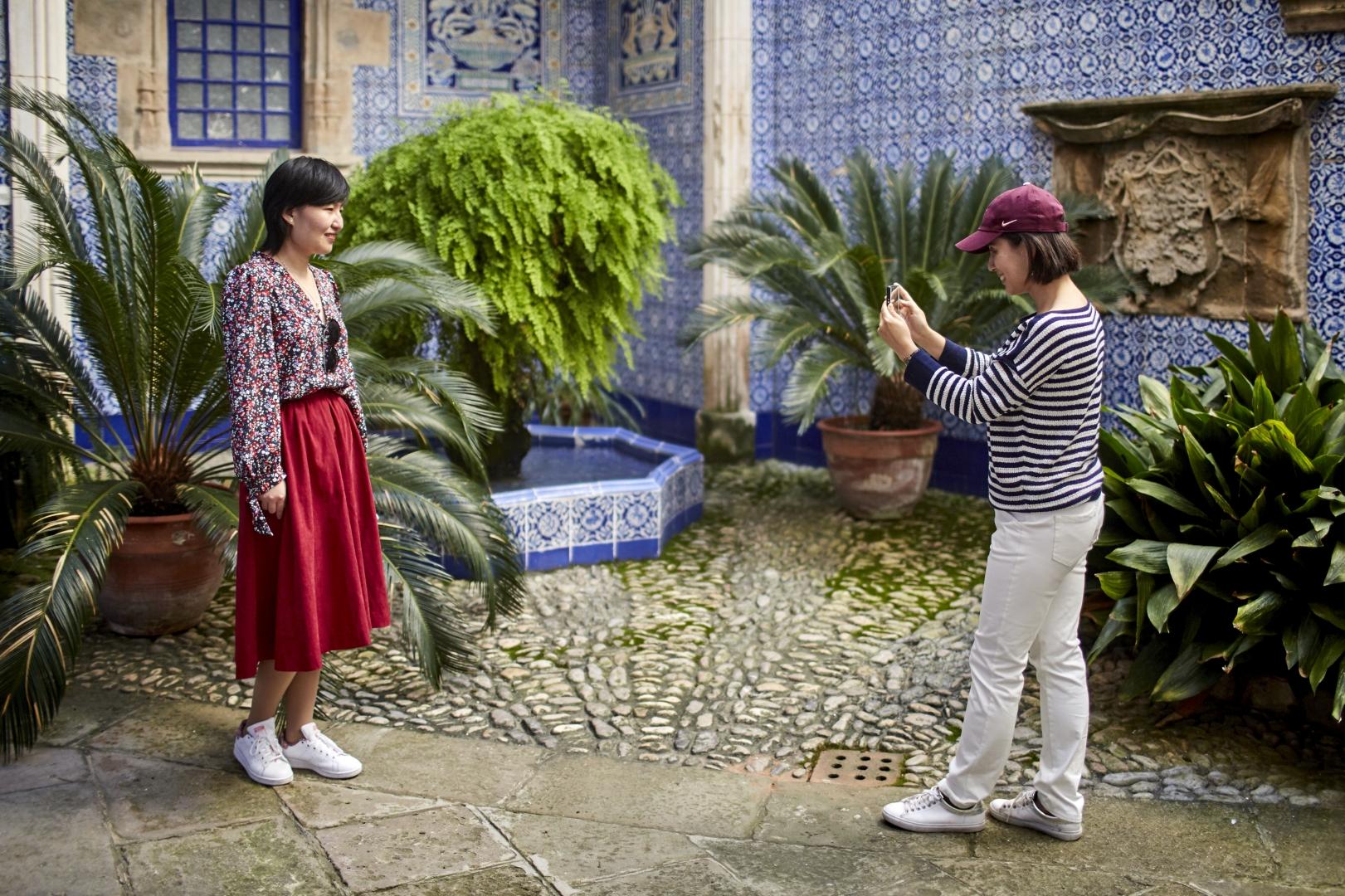Sitges Even has a Palace Too
Okay, let's head over to the Racó de la Calma - also Catalan for "The Quiet Corner" - in Sitges' old quarter, one of the most beautiful, exciting, and commonly photographed areas in town. At one end of this little corner with its unbeatable acoustics is the Cau Ferrat Museum. At the other, the
spectacular 15th-century front door of the Maricel Palace, from Salamanca. This door gives you access to a feast for the senses that you simply cannot miss. We're talking about a Sitges must-see.

Just to make sure you don't say that we leave all the practical information for last, let us tell you that the first step to be able to visit the Maricel Palace is to know its opening days. You will find all the up-to-date information on the Sitges Museums website .
So your wait doesn't feel so unbearable, here are some details (don't worry, these spoilers aren't going to detract even one iota from the powerful impression you'll experience as you enter the Palace). The Maricel Palace, which encompasses many different styles, finds its main aroma in Noucentisme -an early 20th century Catalan cultural movement that originated largely as a reaction against Modernisme- or eclectic art, which permeates the spectacular ornamentation of its main spaces: the Saló d'Or (Gold Room), the Saló Blau (Blue Room), the Chapel Room, the Ships Room, the Terraces (the wave-shaped ones on up on the flat roof) or the Cloister (from where you can enjoy a spec-ta-cu-lar panoramic view of the Mediterranean).

A little bit of history and a few important names. The Maricel Palace was built between 1910 and 1918 by the artist and engineer Miquel Utrillo, commissioned by the American tycoon, art collector, and philanthropist Charles Deering, who fell in love with Sitges after visiting it (yet another one... what can we say?). And we would also add a significant third name: that of the sculptor Pere Jou, creator of the capitals on its façade and inside as well, acknowledged as one of the best examples of Noucentisme from that period.
As well as delighting visitors, the Maricel Palace is a regular setting for workshops and concerts and is also often used as a venue for both institutional and cultural events, including conferences and presentations. Additionally, some of its spaces accommodate corporate events (the terrace guarantees long-range branding and team building). Ah... and also civil weddings. Can you even begin to imagine a better place than this spectacular palace to get married?
